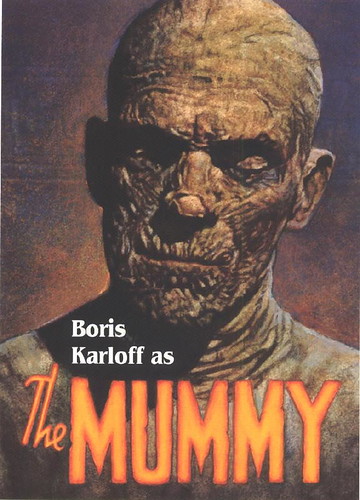
Posted on 04/29/2009 4:03:39 PM PDT by SJackson
Archaeological traces found at Taposiris Magna west of Alexandria may indicate the tomb of one of the most famous couples in history, Queen Cleopatra and Mark Anthony, reports Nevine El-Aref
A joint Egyptian and Dominican Republic archaeological mission working at Taposiris Magna, an area of great archaeological importance on the Mediterranean coast west of Alexandria and site of a temple dedicated to the god of prosperity, Osiris, and a number of Graeco- Roman catacombs, has discovered several Ptolemaic objects dating back to the reign of the famous Queen Cleopatra.
The team was searching the site in the hope of locating the tomb of Cleopatra VII and her lover Mark Anthony. Excavation work in the area began two years ago, as it was believed that the famous couple had dug their tomb in an area some distance from Alexandria in order to be out of reach of their enemies.
Zahi Hawass, secretary-general of the Supreme Council of Antiquities (SCA) and head of the archeological team, said the find fuelled the belief that early historians were able to describe the tomb of Alexander the Great (who ruled Egypt 332-323 BC) but made no mention of a name or a description of a tomb for either Cleopatra or Mark Anthony.
This year the team found a large and previously unknown cemetery outside the temple enclosure. So far it is known to contain 27 tombs; 20 of them shaped like vaulted sarcophagi, partly underground and partly above ground, and the remaining seven consisting of staircases leading to simple burial chambers. Inside the tomb were found 10 mummies, two of them gilded.
Hawass pointed out that the discovery of this cemetery indicated that an important person, probably of royal status, could be buried inside the temple. It was common throughout the Pharaonic period for officials and other high-status individuals in Egypt to construct their tombs close to those of their rulers. The style of the newly discovered tombs indicates that they were constructed during the Graeco-Roman period.
The deputy head of the Dominican Egyptian mission, Kathleen Martinez, said the expedition had excavated a temple at Taposiris Magna dedicated to the goddess Isis and had discovered coins depicting the face of Alexander the Great. The team had found a number of deep shafts inside the temple, three of which seemed to have been used for burials. It is possible that these shafts were the tombs of important people, and the team's leaders believe that Cleopatra and Mark Anthony could have been buried in a deep shaft similar to those already discovered inside the temple.
Hawass said that the expedition had so far found a beautiful head of Cleopatra, along with 22 coins bearing her image. The statue and the coins show her as a beauty, contradicting past indications that she was not particularly pretty. The finds from Taposiris reflect a charm that could have captured the hearts of Julius Caesar and Mark Anthony, and indicate that Cleopatra was in no way unattractive. Moreover, the features of the sculpted head show no sign of African ancestry, contradicting a recently advanced theory. The team has also found many amulets, along with a beautiful headless statue dating to the Ptolemaic Period. Among the most interesting finds is a unique funerary mask depicting a man with a cleft chin. The face bears some similarity to known portraits of Mark Anthony himself.
A radar survey of the temple of Taposiris Magna, west of Alexandria, was completed in collaboration with American expert Roger Vickers serving as a consultant. The radar revealed three possible spots of interest where a tomb might be located. The expedition has received the results of the survey, and will begin excavating each of these three spots next week.
"This could be the most important discovery of the 21st century," Hawass told Al-Ahram Weekly. "This is the perfect place for Cleopatra and Mark Anthony to be hidden." Last year, the team unearthed an alabaster head of Cleopatra and a mask thought to be of Mark Anthony, as well as an alabaster statue of the goddess Aphrodite and a headless basalt statue of a royal Ptolemaic figure. Inside the temple a number of 50-metre deep tunnels and corridors have been found leading to the temple's foundation stones. They reveal that it was built during the reign of Ptolemy II (281-246 BC). With them were found 20 bronze coins dating from the reign of Cleopatra.
The classical Taposiris Magna, now called Abu Sir, was known in the Pharaonic era as Po- Osiris, which means the place of the god Osiris. Under the Graeco-Romans this was shortened to Posiris. It was believed to be where Isis buried the 14th part Osiris's corpse after he had been killed and his body scattered by his evil brother Set. Further excavation is now on hold until November.
No sign of African ancestry? I’m sure that must be a mistake!
One has to wonder if or how the tomb remained unlooted all these centuries?
sw
Did they also find the remains of the snake that bit Cleopatra?
Let the curses begin.

I like this stuff.
“a Dominican Republic archaeological mission.” Like wow!
The snake's in Congress.
I do too, even if it’s speculative.
ping
later
|
|
|||
Gods |
Thanks kalee. |
||
|
· Discover · Nat Geographic · Texas AM Anthro News · Yahoo Anthro & Archaeo · Google · · The Archaeology Channel · Excerpt, or Link only? · cgk's list of ping lists · |
|||
Encyclopedia of Ancient Egypt:
Cleopatra VII was born to Ptolemy XII Auletes (80–57 BCE, ruled 55–51 BCE) and Cleopatra, both parents being Macedonian Greeks.”
Do you mean...  the asp that bit her?
the asp that bit her?
Or my...  shinny metal arse I told Liz Taylor to kiss?
shinny metal arse I told Liz Taylor to kiss?
And don't tell me you don't know...  which is which?
which is which?
Cool.

The deputy head of the Dominican Egyptian mission, Kathleen Martinez,......
Dionysus and Aphrodite, or Osiris and Isis, you decide!
...hahaha, no kidding.
Disclaimer: Opinions posted on Free Republic are those of the individual posters and do not necessarily represent the opinion of Free Republic or its management. All materials posted herein are protected by copyright law and the exemption for fair use of copyrighted works.